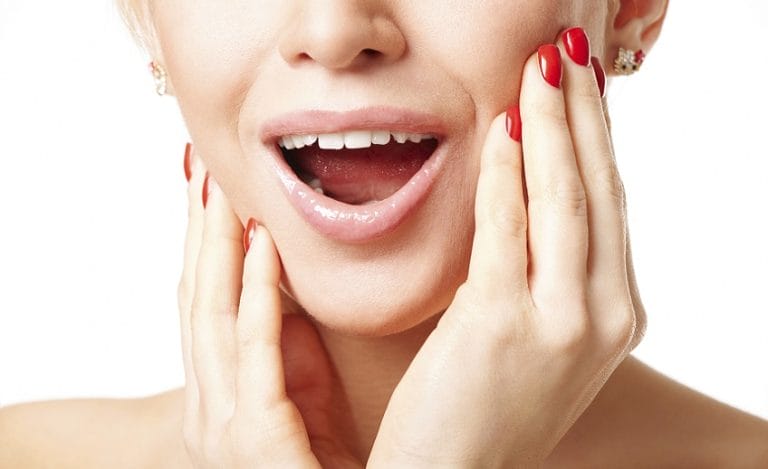Physical pain can be daunting and debilitating. Problems impacting the jaw are often particular concerning. Such maladies often limit one’s capacity to perform pertinent actions like talking and eating.
Searching for derma Botox and other anti-aging treatments here in Port Washington? Click here!
In a solid percentage of instances, discernible problems impact the jaw’s temporomandibular joint, which is sometimes simply abbreviated as the TMJ.
Given that TMD, temporomandibular disorders, or the illnesses manifesting from TMJ concerns, could hinder one’s capacity to effectively communicate, ingest adequate nutrition, and, in certain instances, even open one’s mouth, the medical community continually seeks different forms of treatment.
One such remediation technique is known as BOTOX administration.
Read on for TMJ treatment info using BOTOX. If you have additional questions regarding TMJ treatment, please contact our office to schedule a consultation.
BOTOX Treatment For Jaw Tension And TMD
BOTOX is therapeutic version of the botulism toxin, which when eaten or inhaled in sufficient quantities, could cause serious muscle paralysis. In recent times, researchers have found that small concentrations of the substance might prove effective in addressing symptoms associated with TMD.
How Does BOTOX Treat Jaw Tension And TMD?
In a controlled, medically-supervised environment, healthcare providers carefully inject BOTOX into an afflicted person’s TMJ or surrounding jaw muscles. The numbing effects of the therapeutic protocol are believed to alleviate pain and other associated TMD manifestations.
Typically, the treatment is administered inside the performing physician’s office. Though still in the experimental stages, this is quickly becoming a preferred TMD therapy because said undertaking requires no hospital stay, is minimally-invasive, and can often be administered within 15 to 30 minutes.
How Long Does It Take For BOTOX To Treat Jaw Tension And TMD?
In many cases, those administered injections witness conditional improvements soon thereafter. For some people, said benefits may occur in as little as a couple of days. That said, therapeutic impact might not occur for up to a week.
Risks, Limitations And Possible Complications of Botox® Injections
Usually, the associated risks are few. That said, manifestations could vary from person to person and are often impacted by the specific facial region where injection occurred.
Recipients could encounter side effects, such as flu-like symptoms, headaches, nausea, pain, swelling around the injection site, and muscle weakness. However, these occurrences are not often severe and typically dissipate within a week or so following treatment.
The most potentially untoward side effects often occur in subjects receiving treatment near the mouth. Bruising or relaxation of surrounding muscles might precipitate short-lived issues, including problems eating, kissing, and speaking, in addition to incidents of drooling.
The process should not be performed on pregnant subjects. Furthermore, persons with underlying illnesses are encouraged to disclose such concerns with their doctors before undergoing this therapy.
Is BOTOX Treatment For Jaw Tension and TMJ Disorders Painful?
Typically, the most notable pain associated with the procedure is caused by the needle used at the injection site. Though often fast and temporary, the associated broken skin might cause discomfort. Fortunately, administering physicians might minimize this problem by numbing injection sites with ice or anesthetic preparations.
What to Expect After the Botulinum Toxin TMD Treatment?
In an appreciable percentage of cases, pain and other TMD-related symptoms improve within several days following administration.
What Is The Recovery Period?
In most instances, recipients can return to their daily routine within a day or two following treatment. That said, in an effort to prevent the toxin from traveling to adjacent muscles or bodily regions, healthcare providers recommend limiting physical activity in the procedure’s immediate aftermath.
TMJ Overview: What is TMJ?
TMD is technically a collection of conditions impacting an individual possessing a problematic TMJ. From an anatomical standpoint, the temporomandibular component is considered the jaw joint.
This structure attaches the mandible, which is the jaw’s lower region, to the skull’s temporal bone. The temporal bone is situated adjacent to the ears on each side of the face.
When the joint is healthy and functioning optimally, it opens and closes with relative ease enabling subjects to chew, speak, yawn, kiss, and open their mouths with little, if any, difficulty. TMD occurs when the TMJ or the jaw’s surrounding muscles encounter injury or some other problematic circumstances.
Common causes of the condition include acute jaw trauma, tension placed on the joint by poor habits like teeth grinding or jaw clenching, joint dislocation, arthritis impacting the jaw, and physical or emotional tension.
Signs And Symptoms of TMJ
The most common physical manifestation is pain. Naturally, this discomfort is most prominently seen in the jaw area. However, said discomfort has been known to spread to other bodily regions, including the neck, shoulders, and ears. In addition, this pain might render basic activities challenging.
Stricken subjects might also experience facial swelling, popping or clicking sounds when opening or closing one’s mouth, tooth pain, oral cavity tension, earaches, dizziness and possibly even tinnitus, which is a loud, persistent ringing inside the ears.




